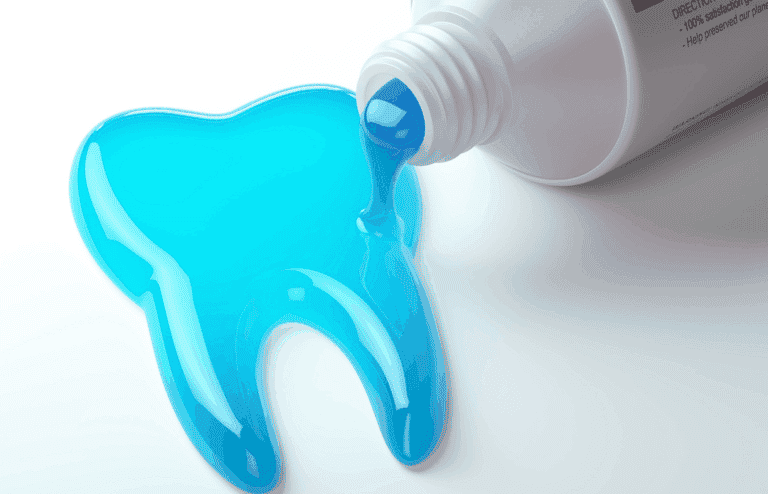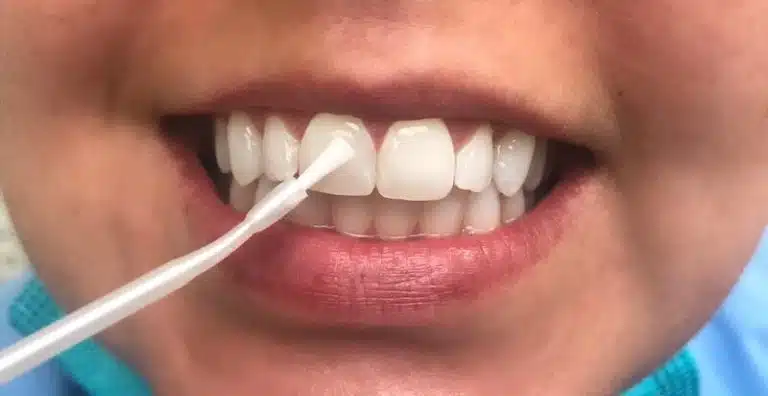What Is Fluoride:

Fluoride is a chemical substance that can be found in different forms and its usefulness varies according to them. We speak of fluoride as an ion that we can find in our usual diet and in nature, it can be found in rocks, soil, and water and also in the animal kingdom present in sardines, salmon, or cow liver; as in the vegetable, in the tea, the tomato, and the potato.
The human body has mechanisms for the metabolic regulation of fluoride that control its absorption, use, and elimination. Almost all of the fluoride that is retained in the body is in the bones and teeth since it cannot be alone as an ion and must be associated with some chemical substances found in them. Fluoride that is not fixed in the bones, teeth, or soft tissues is eliminated mainly in the urine, in small amounts in the stool, and in sweat.
How does fluoride strengthen teeth?
Fluorine is an element found in different parts, however, it is not usually found alone. It has been seeking to integrate into different products to protect and strengthen teeth, and thus prevent cavities. In nature, it is commonly found in the form of a mineral, fluorite, and in the form of salts, called fluorides. Although in large quantities it can be toxic to the body, in the right dose, it is beneficial to health.
Experts conducting studies have determined that fluoride (as it occurs in its combined form with other elements) is the best way to prevent cavities and can even stop tooth decay that has already started.

It is used in both children and adults. In the former, use should be started at an early age, approximately six years, since it is incorporated into the enamel of permanent teeth, making them more resistant to the action of bacteria that causes bad breath and acidic foods.
Sodium fluoride is a white powder with no particular color or odor. When it is in this way it is a highly toxic chemical substance and when exposed to heat it can generate toxic vapors, being considered within the list of dangerous substances of the right to know by OSHA, EPA, and NIOSH among other organisms, so it must be handled by experts and who take the necessary care for its use.
How does fluoride help teeth?
When fluoride fuses with tooth enamel, it accelerates the incorporation of healthy minerals as it strengthens tooth formation or structure. This makes the enamel more resistant to acids generated by food consumption and degraded by bacteria, thus preventing dental caries.
Fluoridation should be started at an early age since the formation of dental enamel is made up of calcium and phosphate, being stronger and more resistant than bone; however, when it comes into contact with the acids generated by bacteria, it causes them to degrade easily. After the permanent teeth erupt, fluoridation should be initiated so the fluoride can help rebuild (remineralize) tooth enamel weakened through the union of fluoride with calcium and phosphorus, strengthening it even more.
For some years, there have been concerns about the negative effects that fluoride can cause on one’s health; however, studies to date indicate that the amounts used in water and other dental products are safe and do not support unfounded concerns.
Therefore, strengthening tooth enamel with fluoride should be done daily by means of oral hygiene and water.
Where can I get fluoride?
Since fluoride penetrates the first layer of the enamel and the consumption of sugary food and drinks, as well as chewing causes it to be eliminated due to an abrasive effect, repeated exposure is suggested for a lasting protective effect. You can find this element incorporated in many products, such as:
Water fluoridation
In studies conducted at the beginning of the 20th century, it was identified that water fluoridation helped reduce levels of dental caries. This determined the widespread introduction of fluoride in the water supply that reaches homes to improve the dental health of the population.
The local water supplier must report how much fluoride is in the water and what has been added (remember that it comes combined ). Expert analysis showed that decayed teeth had a lower fluoride content than healthy teeth, as well as that the occurrence of cavities was lower among children who had consumed natural fluoridated water compared to those whose drinking water had a low concentration of fluorides.
In years before water fluoridation, children had three times as many cavities. Because of its important role in reducing cavities, the Centers for Disease Control and Prevention has proclaimed water fluoridation as one of the ten greatest public health achievements of the 20th century.
Toothpaste with fluoride
There is a wide variety of toothpaste on the market for all ages and according to requirements, they contain a defined amount of fluoride for each age, for example:
- In children under 3 years of age: toothpaste containing at least 1000 parts per million (ppm) should be used, and the amount on the toothbrush should be the size of a grain of rice. Brushing is recommended at least twice a day.
- For children 3 – 6 years old: brushing at least twice a day with fluoride toothpaste with more than 1000 ppm and a pea-sized amount is recommended.
- In adults: brushing should be at least twice a day with a toothpaste containing 1350 – 1500 ppm of fluoride
Note: the use of mouthwash while brushing is not recommended as it can remove fluoride from the toothpaste.
Mouthwash
Some mouthwashes contain fluoride and can be used by adults and children over 8 years of age. They can be used daily, but not at the same time as brushing. It is recommended to include 1350 ppm of fluoride.
Application of fluoride
On some occasions at the dentist, the practitioner may apply a product on the milk or permanent teeth, indicating that the patient should not eat food for a while. This process consists of applying a fluoride film, called varnish. It would be applied to the tooth on average every six months to prevent cavities. Scientific studies have shown that the practice of fluoride varnish protects dental enamel and prevents the generation of cavities, especially in children. Due to the diet they currently eat, they have an even greater risk of generating tooth decay.
The benefits provided by the consumption or use of fluoride are several; however, when consumed or used in excess it can cause other types of signs or symptoms: such as dental fluorosis (lines, spots, or streaks white and opaque, sometimes with an unpleasant and unsightly brown color) as the most important effect located in the dental structure being considered the first visible sign of chronic fluoride poisoning. The use of Fluoride must always be indicated and guided by your dentist to guarantee its proper use, the result in your dental health, and the safety that the handling of the products that contain it should generate.
Therefore, it is important to see a dentist from an early age to monitor and reinforce the application of fluoride to prevent the generation of cavities and other oral health problems. Remember that the suggestion of oral health specialists is to go to the dentist twice a year for regular check-ups. It must be done at the beginning of teething and even more so when the chances of developing cavities are high due to a health problem.
In children under six years of age, it should be used with caution since sometimes there is no reflex action that prevents swallowing or keeping the product in the mouth for a long time. This could generate a long-term condition called dental fluorosis where the person is exposed to too much fluoride. Mild fluorosis manifests as very fine lines or pearl-colored spots on the tooth enamel, while severe fluorosis may crack or discolor the enamel. These conditions are not common and therefore supervised use is recommended.
Conclusion
Fluoride is important for the maintenance of dental health; however, in children under 6 years of age, it should be indicated by a dentist and supervised by an adult so that at the time of brushing with toothpaste containing fluoride, it is not ingested and is properly expelled from the mouth. Many more products contain fluoride, so it is recommended to check their use and quantity, according to age. Above all, consult with your dentist.
Bibliography
- Leeuw, NH Resisting the Onset of Hydroxyapatite Dissolution through the Incorporation of Fluoride. Journal of Physical Chemistry B, published online, doi:10.1021/jp036784v (2004). (accessed August 29, 2022). Available in: https://www.nature.com/articles/news040119-82
- Naise L., Edith Z., Lourdes G., Effects of Prolonged Ingestion of High Concentrations of Fluorides. Our Professors Write: Magazine April 16 (internet) 2015 (consulted 24 Mar 2021) vol 54 (260): 83-94. Available at: https://www.medigraphic.com/pdfs/abril/abr-2015/abr15260j.pdf
- NHS publishing group. Fluoride (Internet). National Health Service in England. Review: August 21, 2021 (consulted on August 29, 2022). Available in: https://www.nhs.uk/conditions/fluoride/
- Mouth Healthy. The Superhero That Lives Inside Your Mouth (Internet). ADA, American Dental Association. (accessed August 29, 2022). Available in:https://www.mouthhealthy.org/all-topics-a-z/fluoride/
- Mouth Healthy. fluoride (Internet). ADA, American Dental Association. (accessed August 29, 2022). Available in: https://www.mouthhealthy.org/en/az-topics/f/fluoride/
- General Council of Official Associations of Pharmacists. El Fluor (internet). Portalfarma.com. Published on Feb 24, 2017 (consulted Mar 24, 2021) Available at: https://www.portalfarma.com/Ciudadanos/saludpublica/consejosdesalud/Paginas/fluor.aspx
- NJHealth, New Jersey Department of Health. Right to Know: Hazardous Substances Fact Sheet. January 2010. (internet) (consulted 24 Mar 2021) Available at: https://www.nj.gov/health/eoh/rtkweb/documents/fs/1699sp.pdf
- WHO. Fluorides and Health. Monograph series 59- 1st ed- Geneva- WHO 1972.(accessed August 29, 2022). Available in: https://apps.who.int/iris/bitstream/handle/10665/37288/9241540966-eng.pdf?sequence=1&isAllowed=y


















